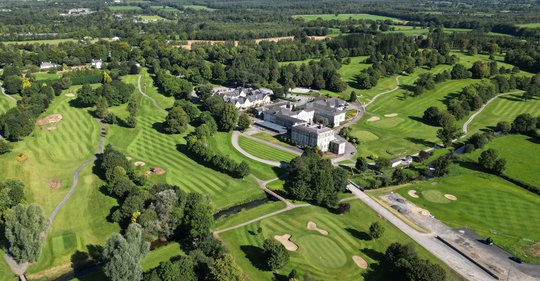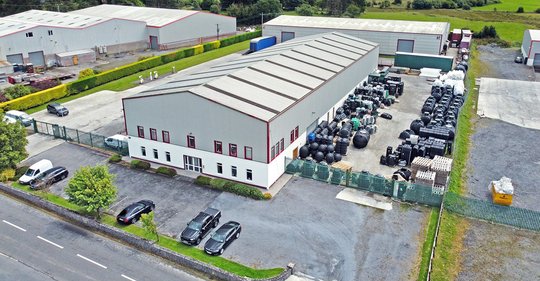Everything you need to know about commercial wastewater treatment systems
When selecting a large or commercial wastewater treatment plant, several important factors need to be considered to ensure compliance, efficiency, and cost-effectiveness. Below are the key elements to assess during the planning and installation phases:
1. What is the application?
Understanding the type of premises is fundamental. Is the wastewater treatment plant being designed for domestic housing, commercial premises, or industrial use? The scale and complexity of the plant will differ based on its application.
2. What is the maximum hydraulic/organic loading per day?
Consider the volume of wastewater generated daily. Who uses the premises, and how many people or operations will be contributing to the load? This information is critical for determining the plant’s capacity and for calculating the population equivalent (PE) — a measure used to define the treatment requirements based on the hydraulic or organic load.
3. Where will the discharged water go?
Where you are discharging the treated wastewater plays a crucial role in system design. Depending on the volume of treated wastewater, you may be permitted to discharge to groundwater, surface water, or a local watercourse. Regulations governing discharge vary based on environmental factors, so it’s important to identify this early.
4. Do you need a licence to discharge?
In most cases, yes. If the volume is high, or if you are discharging to sensitive environments such as surface water or a watercourse, a discharge licence will likely be required. Ensure you consult local regulatory authorities to confirm licensing requirements.
5. What are the parameters of the discharge licence?
The local environmental authority will typically set the conditions of the discharge licence. These parameters depend on the receiving water's sensitivity, the volume of discharge, and the type of effluent. More stringent consent conditions are usually applied in sensitive areas. Ongoing monitoring — including flow measurement and water sampling — is often required to ensure compliance.
6. What reports or testing are required for your planning application?
Planning requirements vary depending on the location and scale of the installation. For large systems or environmentally sensitive areas, hydrological and ecological surveys may be necessary. A Tier 2 or Tier 3 assessment may also be required for installations that discharge to groundwater, including a borehole installation and water monitoring. Additionally, if the plant discharges to a watercourse, an assimilative capacity test must be performed to assess the ability of the receiving water to accommodate additional volume and nutrients.
7. Where should the treatment plant be located?
The location of the wastewater treatment plant is crucial to both operational efficiency and regulatory compliance. Typically, the plant should be situated at the lowest point of the site, where sewer lines can naturally converge. Keep in mind the required separation distance from buildings and other structures. In some cases, a pump station may be necessary to transport sewage to the treatment plant if the site's natural topography does not support direct gravity flow. The plant should also be easily accessible for maintenance and servicing and should not be buried too deeply.
8. What to consider when choosing a wastewater treatment system?
Key factors to evaluate when selecting a treatment system include:
- System performance: Does the system meet your specific treatment needs?
- System reliability: Is the system dependable, with a track record of consistent performance?
- Manufacturer reputation: Consider the reliability and reputation of the manufacturer or supplier.
- Running costs: Assess the long-term operational costs, including energy consumption and maintenance.
- Technical support: Ensure the manufacturer offers strong customer support and troubleshooting services.
- Maintenance services: Regular maintenance is essential for optimal performance, so consider available service options.
9. Commercial applications
Commercial wastewater treatment systems are used in various applications, including:
- Housing Estates
- Commercial Premises (offices, retail, etc.)
- Educational Institutions (Schools & Colleges)
- Leisure and Hospitality (Holiday Parks, Hotels)
- Specialist Premises (Dairy Farms, Vineyards, etc.)
- Municipal Systems and Water Companies.
10. What GRAF can provide
GRAF offers a comprehensive range of wastewater treatment solutions, including:
- Standard Wastewater Treatment Plants (up to 1,000 PE)
- Customised Wastewater Treatment Plants (up to 1,000 PE)
- Sewage Pump Stations: Duty and duty-standby configurations.
- Effluent Pump Stations: Duty and duty-standby options.
- Kiosks: For control panels and system monitoring.
- Percolation Area: Tertiary filters, low-pressure network pipe kits, and MDPE pipes.
- Flowmeters, Telemetry & Alarms: For continuous monitoring and system alerts.
Final thoughts
Selecting the right commercial wastewater treatment plant requires a thorough understanding of the specific needs of the site and local regulatory conditions. Careful planning and consideration of system performance, location, and long-term maintenance will ensure the solution is both effective and compliant.
By working closely with an experienced manufacturer like GRAF, you can ensure that the wastewater treatment system you choose meets both environmental standards and operational requirements.



